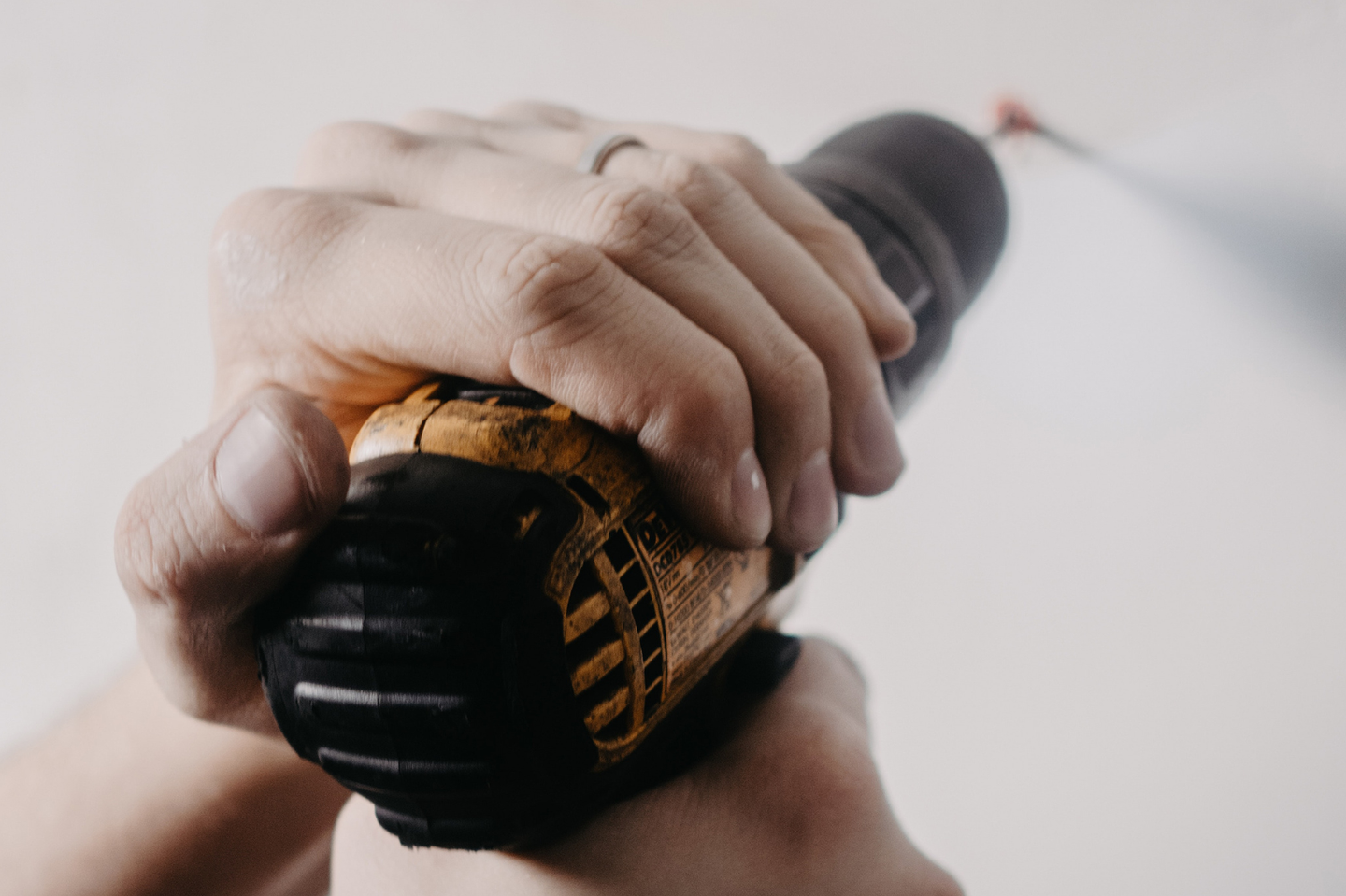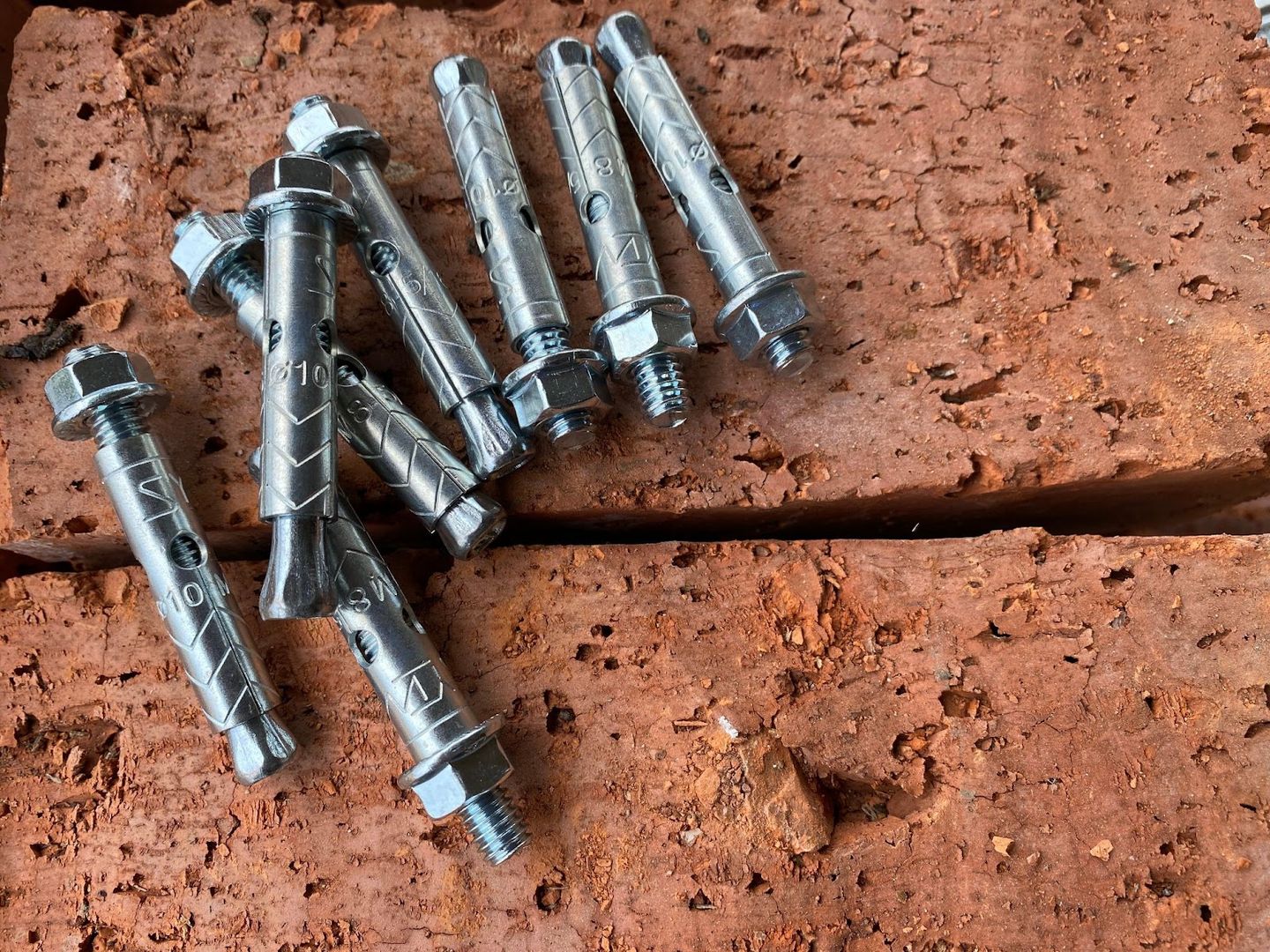Drilling into brick is a project that requires some skill and knowledge. Whether you are hanging a painting or making a hole for electrical wiring, it is important to obtain quality drilling tools and learn the necessary safety precautions to use when tackling any drilling task.
With the right drill bit, appropriate safety gear and a few professional tips, we’re confident that you’ll be effectively drilling in no time.
Discover the diverse types of brick for construction, get to know the factors that'll decide which drill bit you should go for and make sure to get equipped with the essential tools required to drill your way into a brick wall - safely.
Here at HSS, we want to make every DIY task easier for you. That's why we have hundreds of tools available for hire and plenty of resources to help you complete various projects.
So, if you're a beginner looking for guidance on drilling into brick, this blog has you covered.
Drilling into brick vs. mortar: What's the difference and why does it matter?
So, you're a complete novice to drilling and you need to understand the materials before you go ahead and start cutting.
Don't worry, we understand it can be confusing, so let us help.
It is important to understand the distinctions between brick and mortar in order to select the most suitable tools and methods for the project.
Drilling into brick or mortar requires specific considerations due to the unique challenges presented by each material. The two materials have distinct differences in their properties, including their sturdiness and porosity, which can impact the drilling process.
Put simply, brick is characterised by its hard and dense composition, usually made from natural materials like clay. Mortar is typically softer and more porous when compared to other building materials and is often employed as an adhesive in brickwork.
Here are a few things you should keep in mind before applying the same drilling technique to both materials:
- Firmness: Brick is generally harder and denser than mortar, which means that it requires more force and a stronger drill bit to drill into it.
- Porosity: It is far easier to drill into mortar as it is much more porous and therefore may require less force. However, this also means that it is more likely to crack or crumble if drilled improperly and without the correct tools.
- Consistency: Mortar is usually of a smoother, uniform consistency than brick, resulting in greater predictability when drilling. Brick can vary in terms of density, composition, and hardness, making it more difficult to drill.
- Appearance: When using mortar to fill in spaces between bricks, it is more visible to drill into the mortar than into the brick. If you plan to drill in an area that is visible, you may want to think about maintaining a consistent look.

Gathering the right drilling tools and equipment
When attempting to drill into brick, it is advisable to use the proper tools and equipment in order to increase safety and efficiency of the job. To help you get started,, here are some other items that might be necessary:
- Hammer drill: Starting with the main tool, you'll need to buy or hire a hammer drill. These are specialised power tools used to drill into hard material (making it perfect for brick!). They feature a piston-like mechanism that creates a rapid back-and-forth motion, enabling smoother penetration of the material. Moreover, hammer drills typically produce more powerful operations than regular drills and can accommodate larger drill bits (to make deeper holes).
- Rawl plugs: Wall plugs are necessary for mounting items on a brick or concrete wall, plasterboard or other hard surfaces that are not wood. These provide a firm hold in solid materials, or secure themselves in hollow materials or panels. Without a rawl plug, a screw or nail may not be able to grip the walls of the hole in the brick securely.
- Correct drill bits: Masonry or mortar drill bits are specifically suitable for penetration into brick or mortar due to their design. The centre of the bit is manufactured with steel and its tip with tungsten carbide to ensure it can cut through tougher walls.
- Safety gear: As you can probably imagine, a lot of excess dust and debris is likely to be produced through the cutting of brick. It's important to wear appropriate safety gear to protect yourself from brick dust. This might include safety glasses, a dust mask or respirator, and gloves.
- Extension cords: Using a corded drill? You may need to use an extension cord to reach the power source for your hammer drill.
- Anchors/wall plugs and screws: If you're drilling into the brick to install something like a shelf or a piece of artwork, you'll also need anchors and screws to secure your object in place.
- Tape measure: A tape measure is necessary to measure the intervals between drill holes and make sure that they are equally distributed.
When selecting tools and equipment for a project, it is important to select DIY tools of high quality from trusted manufacturers. This will allow you to complete your project safely and with maximum efficiency.
HSS offers a broad selection of drilling and demolition equipment for hire, which can assist you in completing your construction, demolition or renovation project effectively and productively.
Using a rotary hammer drill to drill into brick safely: Step by step
- Assess the area: Prior to drilling, evaluate the space where drilling is intended and make sure there are no plugs in the area. Utilise a voltage detector to identify any potential electrical lines or pipes located in the wall. Ensure that the area is secure and suitable for drilling before beginning - do not skip this step!
- Wear protective gear: Always ensure you have eye protection, protective earmuffs and other necessary safety equipment in place before any power drills are used.
- Mark the spot: If you're new to drilling, it's good to use a pencil or marker to mark the spot where you want to drill. This will help you stay on track and avoid any mistakes. We also recommend creating a pilot hole first, this enables you to drill slowly and ensure complete precision as you begin to apply more pressure.
- Drill into the pilot hole and expand to desired depth: Now that you've marked a starting point, you can go ahead and apply gradual pressure until you achieve the right depth (this should be marked out prior on your drill bit).
- Remove dust: As you're drilling, you'll find that dust builds up quickly. Move the drill bit back and forth to safely clear the hole and prevent clogging.
- Insert the rawl plug and screw: Once you have drilled the hole, insert the rawl plug into the hole (if required). Tap it gently with a hammer to ensure a tight fit. Finally, you can secure the screw into the hole.

Need drilling Equipment? HSS has you covered with flexible rental options
At HSS, we know every project deserves customised solutions - and the right gear to make it happen. Look no further - we've got drills available to hire for every job, from the small and precise to the big and demanding. Skip the hassle and let our expertise be your guiding light - whatever your level of experience, our team will help you find the right equipment to make sure your project goes smoothly.
We provide high-quality equipment, which is well maintained and frequently checked to guarantee optimal reliability and efficiency. Rent the equipment you require for any amount of time without incurring high upfront costs thanks to flexible rental options.
Why purchase the equipment you need for a one-off project when you can hire it temporarily? Let HSS be the answer to your DIY problems!
Your questions answered
How do I make sure the hole is precise?
To achieve a precise hole, keep the drill level and straight throughout the drilling process. Use both hands to grip the drill and maintain control over the bit's movements. When using a cordless drill for larger holes, start at a slower speed to get a feel for the material and how it responds to the bit. Once you have established a good grip, you can increase the speed for a smoother and more efficient drilling experience.
How do I drill into brick without breaking it?
Using rawl plugs when drilling into brick can also help prevent the brick from cracking or breaking. Because rawl plugs are designed to grip the walls of the hole, they distribute the weight of the item being attached more evenly across the surface of the brick. This can help to reduce stress on any one area of the brick, which could cause it to crack or break under the weight of the item being attached.






















































